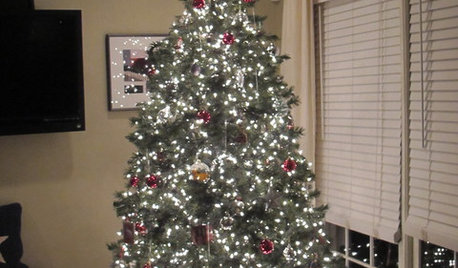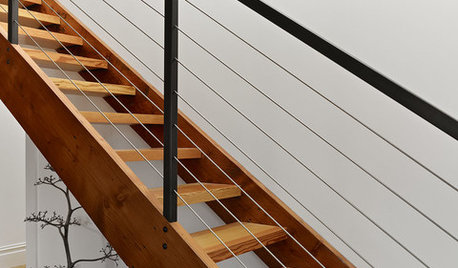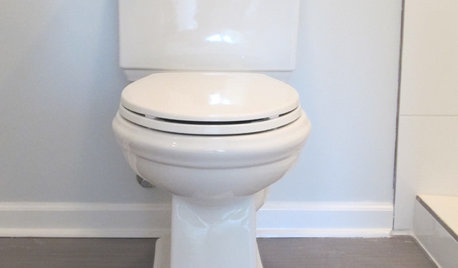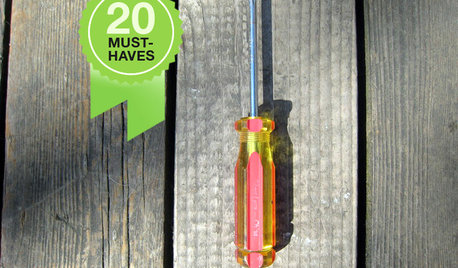Push-in Wire Connectors Stranded Wire Soldering
bltglt
13 years ago
Featured Answer
Sort by:Oldest
Comments (15)
randy427
13 years agobrickeyee
13 years agoRelated Discussions
Ideal push-in wire connectors
Comments (6)Hopefully they have enough thermal cycles on the design to make them more reliable than #14 push wiring connections. Those remain code acceptable (note that #12 push connections are no longer allowed) but are a common source of problems. Keep in mind the NEC is a minimum for fire safety, and a lot of groups have influence on what gets in. This post was edited by brickeyee on Thu, May 16, 13 at 11:17...See MoreSoldering lamp wire to brass(?) terminals/contacts.
Comments (4)Ok, so that worked perfectly, and also was the solution to a related issue I was having with the wiring to the motor (same solution). Worked like a charm. I'm assuming that if the wire survives a good yank, then it is well attached. Electrically, it works as it should. As for flux, I used the lead-free solder that was in the soldering iron package. It didn't say if it had a rosin core, but it smoked and if I cut it, it visually has a core, so I'm thinking I'm ok on that front. So, thank you very much!...See MoreTrailer Wiring - push-in connectors
Comments (1)In order to prevent the splice from failing prematurely, you need to seal out the elements. The push in connectors do not provide any sealing or protection. The best splice is to always strip the wires, slide the appropriate size heat-shrink tubing over the wire, wrap the wires together to provide a secure mechanical connection, solder the connection, slide down the heat-shrink & heat to seal the connection. Butt splices when crimped with a real crimp tool and covered with heat shrink is a distant second choice. The little blue in-line snap connectors are a sure failure. Also, make sure you use star washers on both sides of the ground to chassis wire terminals - after cleaning any paint off the chassis at the connection point....See MoreShort Doorbell Wire! How to extend without soldering?
Comments (2)Thanks. This looks like it will solve my problem!...See Morebltglt
13 years agoDavidR
13 years agobrickeyee
13 years agocountryboymo
13 years agobrickeyee
13 years agoalan_s_thefirst
13 years agocountryboymo
13 years agobrickeyee
13 years agobus_driver
10 years agobtharmy
10 years agoyosemitebill
10 years agoyosemitebill
10 years ago
Related Stories

CHRISTMASHow to Light Your Christmas Tree Like a Pro
Give yourself frustration-free tree lighting this year — the trick is clever cord management
Full Story
LIGHTINGThe Lowdown on High-Efficiency LED Lighting
Learn about LED tapes, ropes, pucks and more to create a flexible and energy-efficient lighting design that looks great
Full Story
BATHROOM DESIGNWarm Up Your Bathroom With Heated Floors
If your bathroom floor is leaving you cold, try warming up to an electric heating system
Full Story
CONTRACTOR TIPSBuilding Permits: 10 Critical Code Requirements for Every Project
In Part 3 of our series examining the building permit process, we highlight 10 code requirements you should never ignore
Full Story
MOST POPULARA Contractor's Secrets to Hanging Holiday Decor
Hang a wreath or garland on brick, concrete, Sheetrock or wood the professional way — and avoid the potential pitfalls
Full Story
LIGHTINGA Beginner’s Guide to Lighting in Layers
Discover the secrets of combining light sources to create richer-looking and more flexible living spaces
Full Story
ARCHITECTUREDesign Workshop: Modern Handrail Details
What to know about material, shape and customizable options when designing a handrail
Full Story
LIFEHouzz Call: Show Us Your Nutty Home Fixes
If you've masterminded a solution — silly or ingenious — to a home issue, we want to know
Full Story
BATHROOM DESIGNHow to Install a Toilet in an Hour
Putting a new commode in a bathroom or powder room yourself saves plumber fees, and it's less scary than you might expect
Full Story
HOUSEKEEPING20 Tools Every Homeowner Should Have
You probably have a hammer, but that's just a start. These 20 tools and devices are superstars for household projects and repairs
Full Story





gcronau